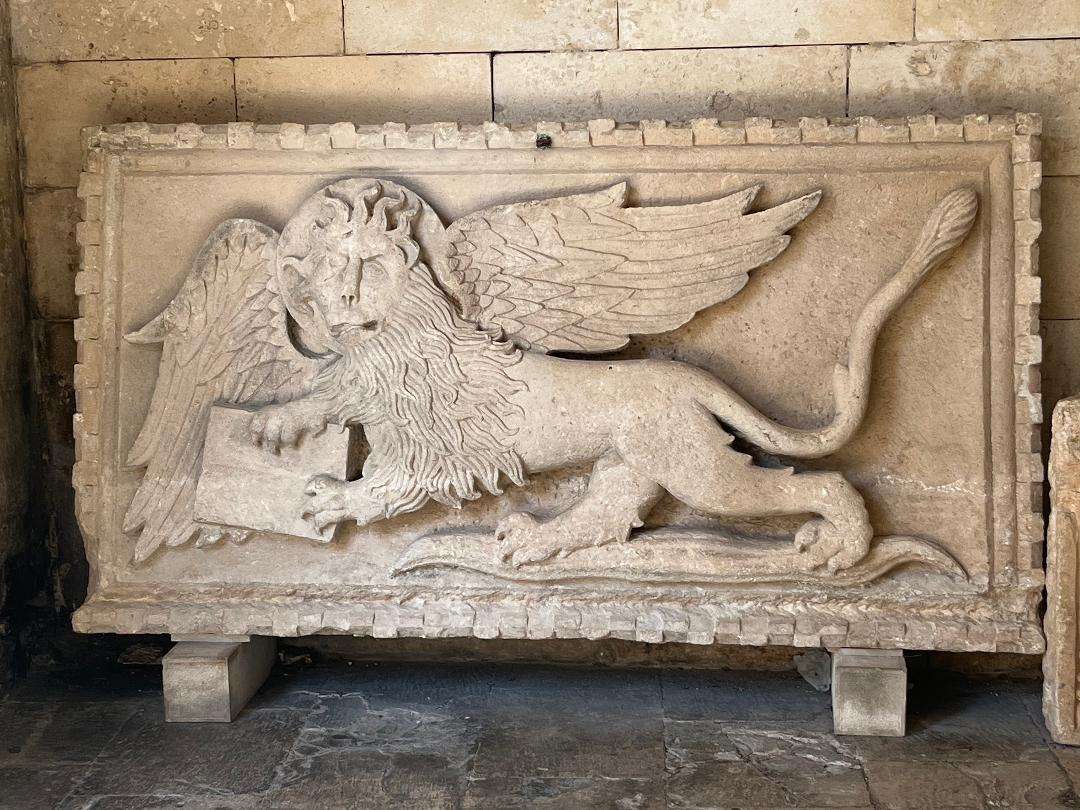KORCULA TOWN'S VENETIAN TIES
There is no doubt that Korcula makes the most of its ties, real and imagined, to Marco Polo. Even though it is almost impossible to separate the facts from the myth, the part Venetians in general played in the island’s history is indisputable.
From 1125 until 1797 (bar a hundred or so years when other Italians were in charge) Korcula was under Venetian rule. They designed the old town as we see it today, with its cunning herringbone structure to make the most of the sea breezes. They built Saint Mark’s cathedral, the walls and towers tourists still marvel at. They traded from the island and became deeply embedded in its culture.
I discovered this rather fine Venetian lion sculpture when I was grabbing some shade just inside the landmost town gate. Although it looks a little battered it’s a fine piece of work, and the open book between its paws told me it was carved in a time of peace. To be fair, that would be most of the island’s Venetian history.
But why is it resting on an old stone bench, and not proudly attached to a building? It took me a while to discover the answer, and when I did, it was rather sad; when the communists came to power after the Second World War, symbols of Italian rule (however long before) were destroyed and replaced by partisan red stars and pictures of Tito. Little did I know it when I found it, but this one was lucky to survive.
There are many more ephemeral Italian influences that remain strong today, for example a fondness for pasta (especially makaruni), and brodet (a traditional fish stew), and few Venetian words smattered across the local dialect. But more than anything else it is the fabulous architecture of Korcula Town; the quality of the stonework, the elegance of the balconies. Venice’s little sister (minus canals) indeed.
